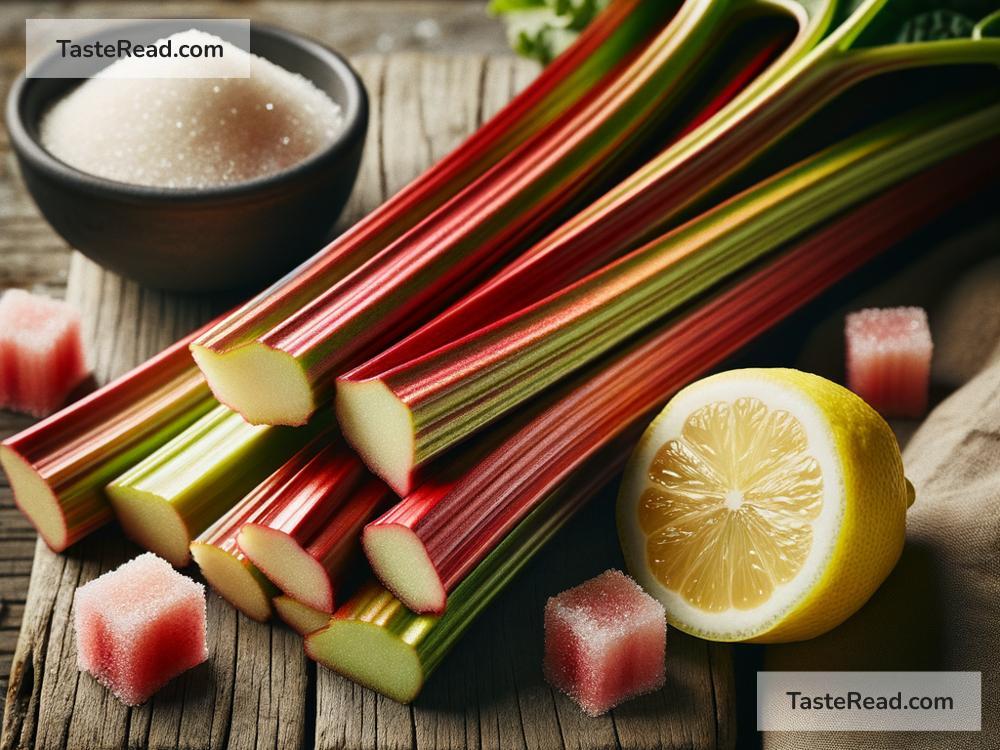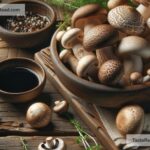The Science Behind the Tangy Flavor of Rhubarb
If you’ve ever taken a bite of rhubarb, you’ll know it has a distinctive tangy, tart flavor that can make your mouth pucker. This vibrant, red-green stalk is a staple in pies, jams, and desserts, often balanced with sugar to tone down its sharpness. But have you ever wondered what causes rhubarb’s intense tangy taste? Let’s dig into the science behind this fascinating flavor to uncover its secrets.
What Makes Rhubarb Tangy?
The tanginess in rhubarb mainly comes from organic acids that are naturally present in the plant. More specifically, the tart flavor is caused by two key acids: malic acid and oxalic acid. Both of these acids give rhubarb its sour taste, but they also serve important roles for the plant’s health and growth.
Malic Acid: The Sweet-Tart Superstar
Malic acid is a common acid found in many fruits, such as apples and grapes. It’s what gives these foods their slightly tangy taste. In rhubarb, malic acid is one of the primary contributors to its sour flavor. This acid occurs naturally in the plant and helps regulate its internal processes, such as energy production.
Malic acid belongs to a group of compounds called alpha hydroxy acids (AHAs), which are also found in skincare products for their exfoliating properties. In rhubarb, malic acid not only enhances the tangy taste, but it also protects the plant by making its tissues less appealing to pests and insects.
On your tastebuds, malic acid creates a bright, sharp sensation that’s both refreshing and mouth-watering. That’s one reason why rhubarb is often combined with sweet ingredients like sugar or honey. The sweetness balances out the sourness, creating a flavor harmony that people love in treats like rhubarb pie and strawberry-rhubarb jam.
Oxalic Acid: The Tangy Culprit
Oxalic acid is another major acid found in rhubarb, and it plays a significant role in the plant’s tangy profile. This acid has a strong, sour taste and is commonly found in other vegetables like spinach, beet greens, and Swiss chard.
Oxalic acid is unique because it binds to minerals like calcium and magnesium in your digestive system. While it’s not harmful in small amounts, consuming too much oxalic acid can reduce your body’s ability to absorb these minerals, and it can even lead to kidney stones in susceptible individuals.
The highest concentrations of oxalic acid are found in rhubarb’s leaves, which is why you should never eat them. In fact, rhubarb leaves are considered toxic due to their high oxalic acid content. Luckily, the stalks—the part we eat—contain much lower levels, making them safe and enjoyable when cooked properly.
Why Does Cooking Rhubarb Help?
If you’ve ever tried raw rhubarb, you’ve probably noticed it’s very sour and tough. Cooking rhubarb changes its texture and flavor significantly, making it softer and more palatable. But what’s going on during the cooking process?
When rhubarb is exposed to heat, some of the acids break down and lose their potency. Heat also softens the fibrous structure of the stalks, releasing juices that mix with other ingredients (like sugar) to mellow the tartness. Adding sugar doesn’t just mask the tanginess—it chemically reacts with the acids to create a more balanced taste.
Cooking rhubarb can also reduce the concentrations of oxalic acid, but it doesn’t eliminate it entirely. That’s why rhubarb is almost always paired with sweeteners and combined with other ingredients to enhance its flavor while making it safe and enjoyable to eat.
Why Do People Love Rhubarb’s Tangy Flavor?
Even though rhubarb is extremely tart on its own, people love its unique flavor. The tanginess adds excitement to recipes, acting as a refreshing contrast to sweeter ingredients. It wakes up our taste buds and provides a bold, bright flavor that stands out in dishes.
The science behind our love for tangy flavors is also interesting. Sour tastes have a way of stimulating our salivary glands, making us physically salivate. This makes tangy foods feel more juicy and satisfying to eat. Plus, the combination of sweet and sour flavors—like in a strawberry-rhubarb dessert—triggers a sense of balance that humans naturally enjoy.
Fun Facts About Rhubarb
- Rhubarb is technically a vegetable, but it’s often treated like a fruit in desserts and sweet recipes.
- The stalks come in red, pink, and green varieties, but the flavor doesn’t depend much on the color—it’s all about the acids!
- Rhubarb was originally used in ancient medicine, prized for its health benefits long before it became a popular baking ingredient.
Conclusion
Rhubarb’s tangy flavor is a result of its unique combination of malic acid and oxalic acid, which give this vegetable its sour, mouth-puckering taste. While its tartness may seem overwhelming at first, cooking and pairing rhubarb with sweeteners transforms it into a delicious, versatile ingredient loved by many.
So, the next time you enjoy a slice of rhubarb pie or a spoonful of strawberry-rhubarb jam, you can thank the science of organic acids for giving this humble stalk its bright, tangy personality. Now that you know the science behind rhubarb’s flavor, it’s even more exciting to enjoy it in your favorite homemade recipes!


